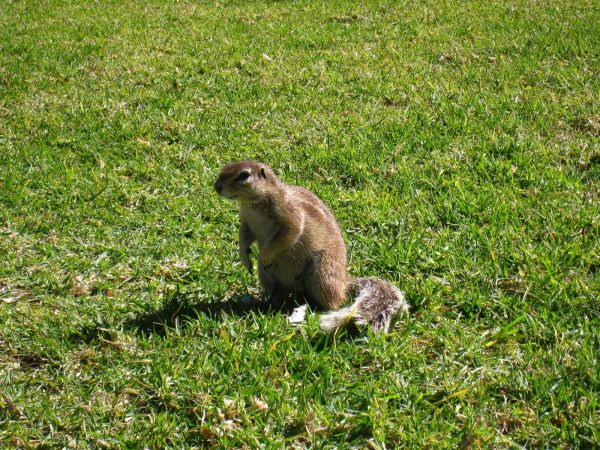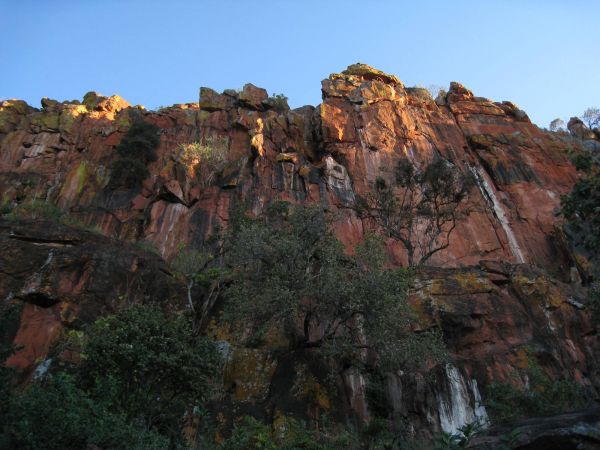
The Waterberg created this gentle transition toward the animal kingdom. Because “Africa” rhymes with “Odysseys of wild animals”. For mammals, birds or reptiles, one of their shrines is called Etosha and roosts at the north of Namibia. This vast park gathers various habitats and encompasses the Etosha pan which gave it the name.
The sun timidly rises on the horizon, an excitement shakes us when we get in the park. It's the east entrance of Namutoni. The cameras, out of their cases, are ready to capture the slightest manifestation of wildlife. We will have only waited for about one hundred meters. A giraffe crosses the road to tear some acacias up. First view of Etosha. A youthful dream.
The opportunity to watch animals is concentrated on the waterholes. And the game consists in being at the right water point at the right moment. The first one, a tuft of grass in the middle of an aquatic ring. We stop the engine and wait. We scan the horizon and whisper about what we think to see. A hyena, head down, walks in the distance. A jackal goes near and step around the pond. A springbok gazes at itself. The discovery is progressive. The joy is constant. Each species takes part in this ecosystem. Wildebeests graze alongside the track among high grass.
The animals relentlessly follow on. We don't take off our cameras any more and our 6 eyes leap from a bush to a branch before going again to the horizon line. Sometimes multicoloured birds, twisted antlers of kudus or throng of gemsboks ; sometimes a giraffe behind a shrub which winks at us. We remain speechless, the smile screwed on our lips.

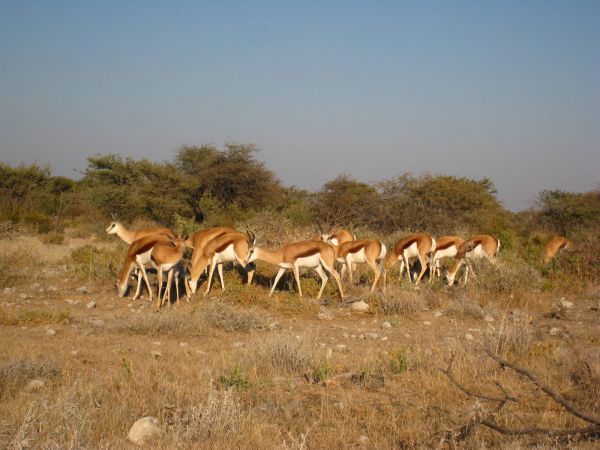











Another mythical animal comes on. A characteristic blotchiness. A horse-like body that seems familiar to us. A tribe of zebras comes to drink between two palm trees. A few meters beside, a giraffe, in an unpleasant position, shares this stock of vital liquid.
The zebras leave back and we take again the road. We drive on the giraffes' land. Long necks appear on the horizon. An elephant slowly passes. With a heavy step, it heads for the waterhole. We crawl along and the long spotted necks keeps on swinging, not synchronized with the rest of the body. Concert of colours and movements which engraves on our pupils.
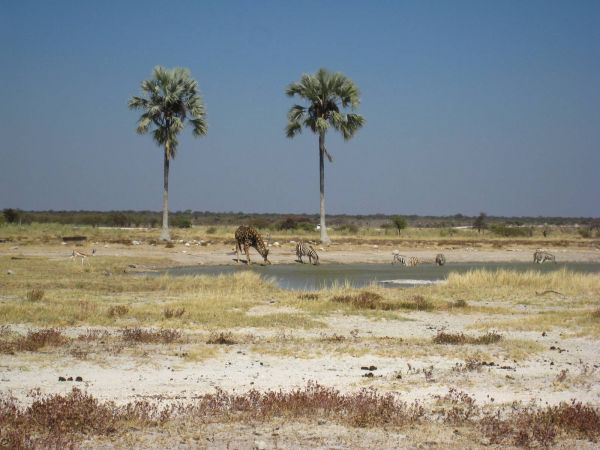
















We go back to the Halali campsite, one of the 3 campsites nestled in the park. We remain in the cocoon. At the bottom of the campsite, a waterhole was built. A terrace looks over the place and the Halali's dwellers come to try their luck, the eye riveted on the other side of the fence. And this first day ends in a blaze of glory with a nocturnal fight between two black rhinoceroses
Happy to hear the alarm-clock which resounds at 6 o'clock in the morning. The call of savannah rang out. We wait for the opening of the campsite gate and dash off to the first waterhole. Zebras and springboks share our everyday life. An elephant gives itself a shower of dust. We recite the lessons of the day before. All this diversity of animals prints our retina. We sail from a water point to another one. At the sunset, a herd of about thirty elephants reserved the pond. The colossuses play and delight us.







Our third day in Etosha starts facing a lion. One of the “big five” - subjective ranking of the 5 most dangerous animals. The lion, for its exceptional ability to attack its prey; the leopard for its camouflage ability among the high grass or at the top of a tree and its ability to swoop down on its prey; the black rhinoceros for its unpredictable mood and its ability to blindly charge at its enemy; the elephant for its prodigious ability to smash whatever faces it when it feels in danger and; the buffalo, perhaps the most dangerous one, with an impressing faculty to turn against the predator or its attacker when it's wounded and charges at the latter with all its strength even if it had to die.
The lion stands up and walks toward us, I think it's wiser to close the window... The feline crosses the track and heads for the waterhole to quench its thirst. The king of animals drives everybody away. A few mischievous springboks graze about one hundred meters away. The profusion of animals continues, zebras, gemsboks, wildebeests, ostriches, hornbills, secretary birds, kudus come to the water point in ever-greater number.


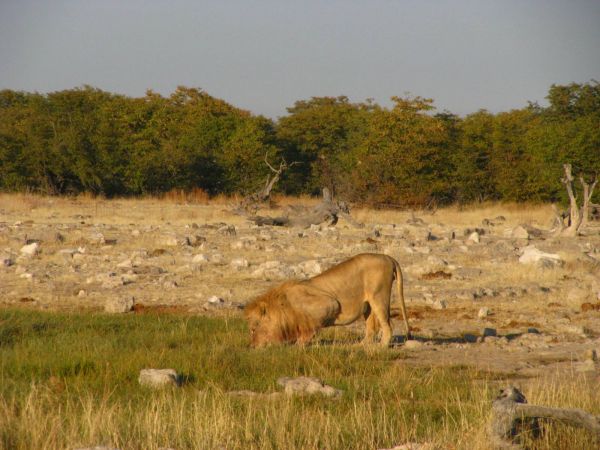








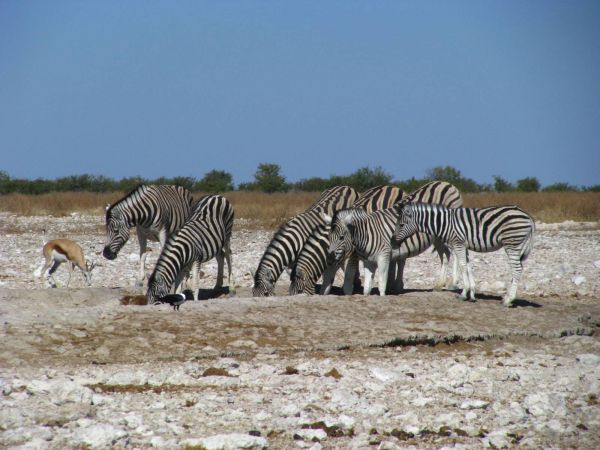




A couple of mongooses and a squirrels family accompany our last hour in the park. Small animals, full of vivacity before driving back to say goodbye to the master of the mammals, the elephant.








Un combat d'éléphants en guise de bouquet final...
We get out of the park for some new adventures. But something indescribable remains. A blend of husky cries, pied colours, rolling gaits, graceful flights and savannah smells.







